With over 300 ethnic – and perhaps several hundred sub-ethnic – groups, it is no easy task to identify all of Indonesia’s peoples. Modern methods use language as the most important criterion in ethnic identity, and while there are known to be more than 700 distinct languages in Indonesia, many more are yet to be studied.
Java houses the largest proportion of Indonesia’s total population, with 58 percent, followed by Sumatra with 20 percent and Sulawesi with 7 percent. Kalimantan has 6 percent, as do Bali and Nusa Tenggara combined. Maluku and Papua have a total of 3 percent. Each island is inhabited by several groups. The most heavily populated province is DKI (Special Province) Jakarta with 14,440 people per sq km, and the least crowded is West Papua with 8 people per sq km.
Ethnic groups
The Javanese are by far the largest ethnic group, with 42 percent of Indonesia’s total population. Having an ancient court culture based in Central and East Java, with its long history of mighty empires and sheer numbers, it is no wonder that the Javanese tend to dominate the country’s bureaucracy, military and politics. The majority of Javanese are Muslims, yet for many their religious and traditional rituals include pre-Islamic Hindu and animistic elements. With a definite segmentation within the culture, every Javanese knows which category he or she falls within – the aristocrats, the merchants and traders, or the peasants – and that is indicated by which level of their hierarchical, three-pronged native language is spoken when addressing others.
West Java has Indonesia’s second-largest ethnic group, the Sundanese, who form 15 percent of the population. They too have a long dynastic history, but they lack the elegance and the controlled manners that heavily influenced the Javanese. The form of Islam practised by the majority of Sundanese is not diluted, although lineage is equally important. In general, the Sundanese – who did not have the same rigid court structure as the Javanese – are more independent and individualistic.
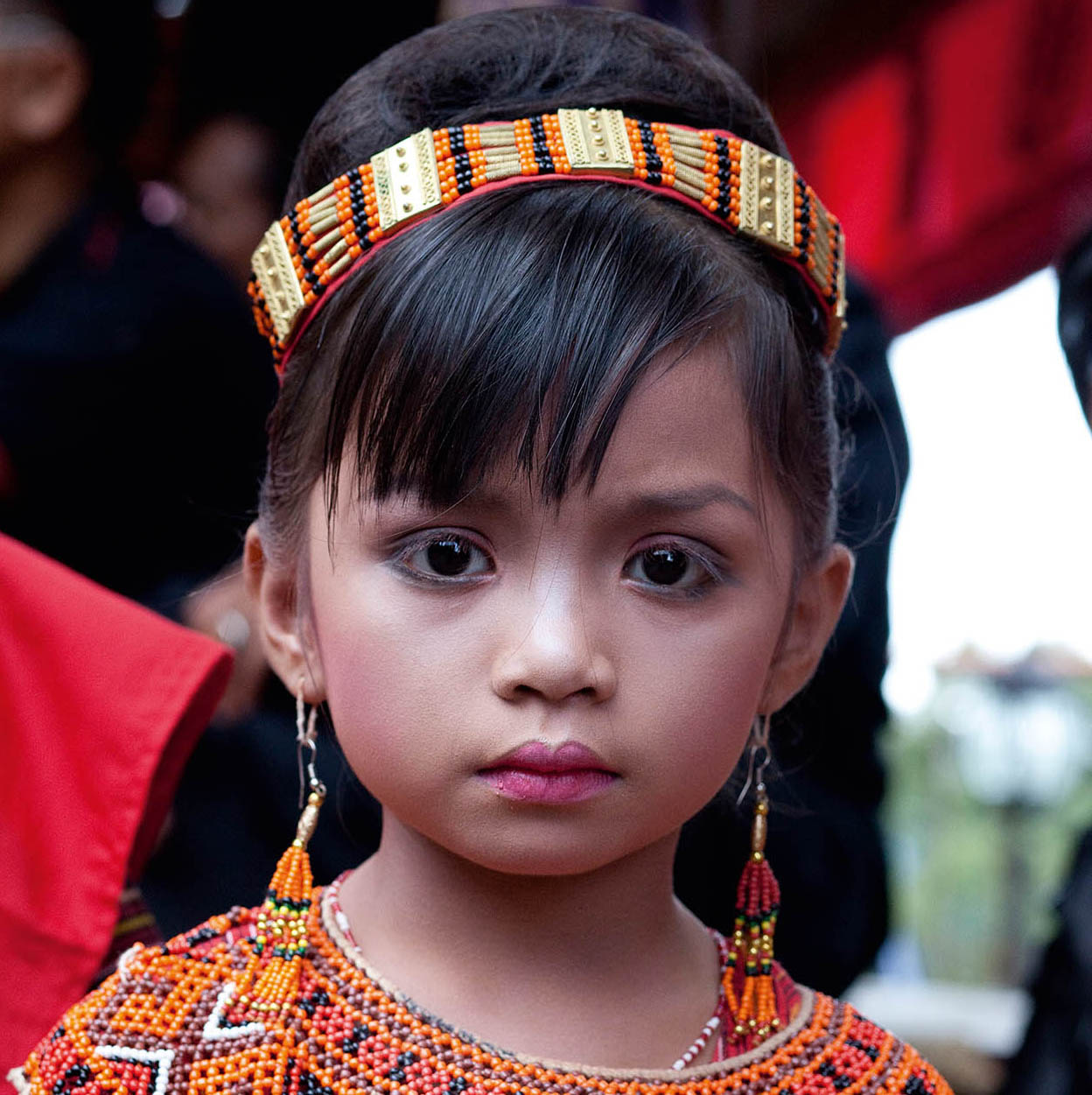
Traditional costumes are worn to welcome guests at a Torajan funeral ceremony.
Corrie Wingate/Apa Publications
Off the northeastern coast of Java on Madura island, the Madurese are renowned for their bravery and quick temper. Overpopulation and poor soils forced many Madurese into the maritime trade during ancient times. Their language is also divided into refined, medium and vulgar categories. The people are pious Muslims who accord high status to Islamic preachers.
Another of Indonesia’s hot-headed groups is the clan-ruled, monogamous Batak, who inhabit the highlands around Lake Toba in North Sumatra. Primarily Christians, they are known for their outspokenness, their former reputation as cannibals, and their passion for singing raucous drinking songs and maudlin, melodic love tunes.
The Bugis and the Banjarese live in the southern part of Sulawesi. They are primarily Muslim seafaring people who are known as good sailors, skilled in shipbuilding, and shrewd businessmen. In the past, they often migrated elsewhere to earn a living and, at one time, almost controlled the trade of the region. The Bugis (pronounced boo-gees) were once the most feared pirates of the sea, and some say the Western expression ‘the Bogeyman’ is named after this tribe.
Autonomy
During the iron-fisted rule of Suharto, 100 percent of revenues earned by the provinces were under the control of the central government. Soon after Suharto fell in 1998, voices were raised, most notably in Aceh (Sumatra), Maluku and Papua, demanding autonomy. In 2000, the Wahid administration granted their wishes, and for the first time taxation, budgeting, infrastructure and trade became locally managed, with the lion’s share of revenues remaining in the province. This was good news for some, such as resource-rich East Kalimantan; however, autonomy is not particularly beneficial for poorer areas, which must eke out their existence with loans, grants and other foreign aid.
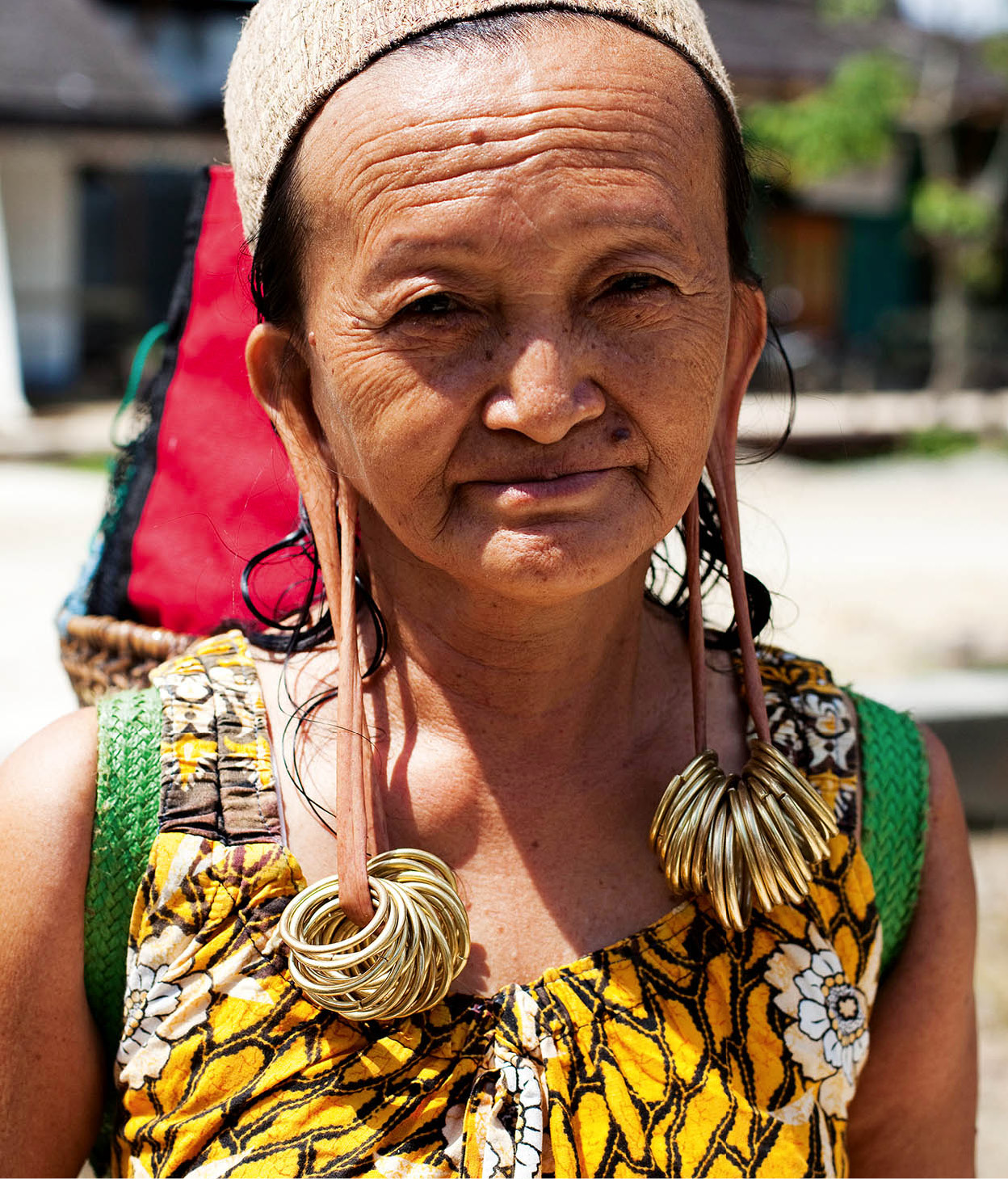
Dayak women with extended earlobes.
Corrie Wingate/Apa Publications
Similar in numbers to the Bugis and the Banjarese are the Minangkabau of the breathtakingly beautiful hills of West Sumatra, whose matrilineal kinship system combined with a staunch belief in Islam and adherence to adat (traditional) laws is unique. Their coming-of-age ritual for men, merantau (seeking a fortune abroad), has scattered them throughout the archipelago, and they are quickly recognised by their rumah makan Minang or Padang food restaurants. Known as highly educated, keen entrepreneurs, Minangkabau include well-known writers and political leaders.
On the far northern tip of Sumatra is Aceh, the only province in Indonesia that has adopted Sharia (Islamic) law. With its strategic location at the entrance to the Malacca Strait, the gateway to Indonesia’s spices and trade with China further east, Aceh was a crucial stopover for merchants from Arabia and India, and was the point of entry for Islam as early as the 13th century. The Achenese (1.9 percent of the population) are primarily known for their staunch adherence to Islam.
Although the Balinese are arguably the best-known Indonesians, they are a relatively small group in the grand scheme of things, comprising only about 1.5 percent of the total population. They have a unique culture and, except for small groups in Java and Lombok, are the last bastion of Hinduism in Indonesia. The islanders are not only gifted in the arts, but also live their lives by their religion, participating in the many rituals of life and agricultural cycles.
Balinese society is structured around a hereditary caste system that is far more relaxed than the Indian version. It does, however, carry certain rules of etiquette, as ordained in the Hindu scriptures. At the top is the Brahman caste; only Brahmans are allowed to be high priests. The Satriya form the second strata of society; they are the descendants of warriors and rulers. The merchants and administrative officials, or Wesia, occupy the third rank, and at the bottom are the Sudra, the common people, who account for 93 percent of Bali’s population. The Sudras are not deemed inferior or denied access to specific professions; while an upper-caste background does not guarantee a high income or direct access to political power. In Bali, a university professor could be a Sudra or a waiter may turn out to be a Brahman.
Chinese-Indonesians today
The Dutch instigated discrimination against the ethnic Chinese by using traders and merchants from China as a buffer between the European elite and the indigenous majority. Astute businessmen, the Chinese began to acquire wealth, while the vast majority of Indonesians remained farmers and labourers, and this caused resentment.
Obsessed by the threat of communism, when Suharto came to power he banned all things Chinese, including their media, schools, language and rituals. Thousands were banished, and those who remained were forced to change their names to Indonesian. Adding insult to injury, throughout the 32 years of his rule, Suharto used the Chinese-communist connection as a scapegoat to divert the public’s attention from his misdoings at every possible turn.
As a result of these policies, millions of Chinese have grown up speaking Indonesian, have been educated as Indonesians and have no ties to China – all of which has contributed to less anti-Chinese sentiment. In another strange twist of fate, the wealth of the community has now been surpassed by that of non-Chinese.
Since Suharto’s fall, the regulations discriminating against Chinese-Indonesians have been repealed. Chinese-language media is prevalent, dragon and lion dance troupes appear in nearly all celebrations, and Lunar New Year is a national holiday. In 2000, Indonesia added Confucianism as the sixth officially recognised religion.
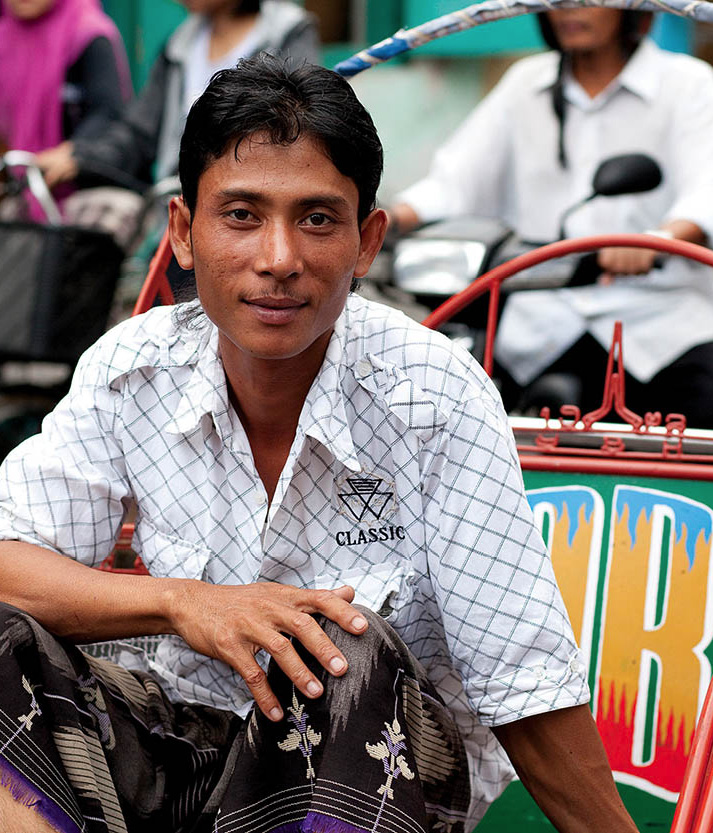
Becak driver in Togyakarta.
Corrie Wingate/Apa Publications
‘Unity in diversity’
It was Dutch colonialism that, in its fervour to control the world’s spice trade, forced Indonesia’s multi-ethnic and multi-religious society into what was to become one nation. Under Dutch rule, selected elites received Western educations, were governed by the same economic and administrative system and experienced similar, if not identical, problems. The Dutch provided a form of social cohesion that enabled the various ethnic groups to come together. The Japanese occupation, although lasting a brief 3½ years, was significant in that it provided Indonesians with military training and further stoked their zeal for independence. To their own ends, the Japanese also actively promoted nationalism, a movement that eventually gained Indonesia its independence and created a nation based on the boundaries of the former Dutch East Indies.
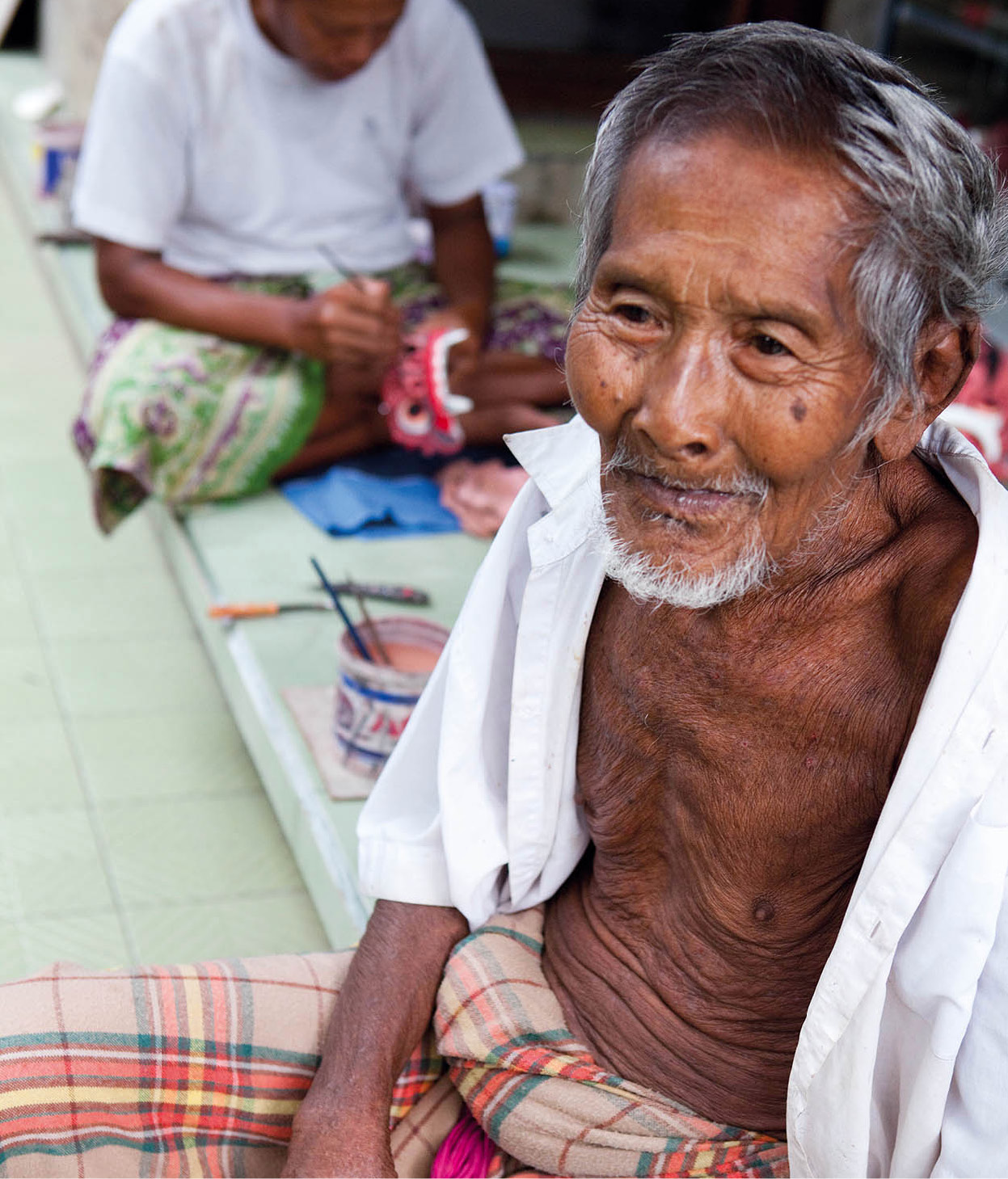
Batuan mask makers, Ubud.
Corrie Wingate/Apa Publications
Another factor that helped to unite the ethnic groups was language. Although the language of a minority group, Malay was used widely as a medium of communication between different ethnic groups in trade relations and in the marketplaces. Campaigners used it to propagate the Indonesian nationalist movement throughout the diverse archipelago. When independence was achieved in 1945, a form of Malay was made into the national language, Bahasa Indonesia.
When Suharto ruled Indonesia, a transmigration policy was used not only to redistribute population density, but was also a guise to promote national unity. Java accounts for only 7 percent of the Indonesian territory, but 58 percent of the population live on the island. The policy put pressure on those who lived on Java and Bali, particularly the Javanese, to migrate to the Outer Islands, and the forced resettlement created much friction between locals and newcomers. Viewed as largely unsuccessful, the transmigration programme lost its zeal when the central government was regionalised in 2000 and the provinces and regencies were given full autonomy.
Traditional Javanese society requires one to be sopan santun (well mannered). Rukun (harmony) is the primary goal, achieved through knowing one’s place in society and acting out one’s assigned role.
Throughout history, ethnic and religious conflicts have occurred between Java/Bali and the Outer Islands, but more especially after independence. The people of the two regions are not only ethnically different, but also dissimilar in their approach to agriculture. The principal farming method in Java and Bali is that of sawah, or wet rice-paddy cultivation, while the main method employed in the Outer Islands is lading, or slash-and-burn cultivation.
Until fairly recently, Java and Bali were collectively regarded as agricultural societies, in contrast to the Outer Islands, which were considered maritime. In an agricultural society, the need for close cooperation among villages is paramount, and people tend to be socialistic. In a maritime society, where the livelihood does not depend solely on agricultural products and trade is important for survival, people tend to be more individualistic. This split was emphasised by the aristocratic nature of Javanese society.
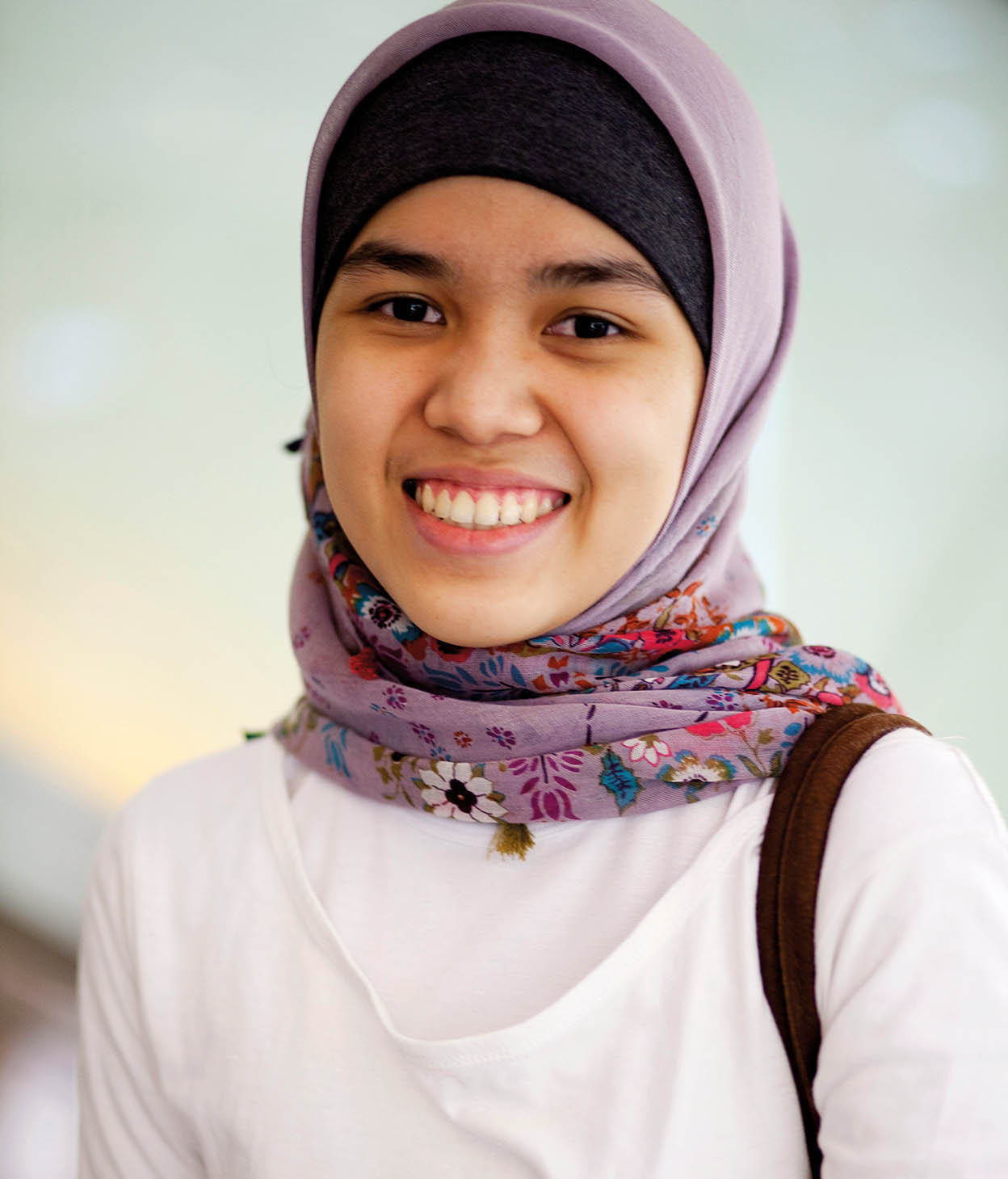
A portrtait of urban youth, Jakarta.
Corrie Wingate/Apa Publications
Defining ‘Indonesians’
It is difficult to define ‘Indonesians’ and to generalise about how they think or feel about any given topic. Their particular ethnic upbringing plays its part, but there are vast differences – as there are in every country – between people who are educated and live or work in a metropolis where viewpoints are broader and those who are uneducated and remain isolated in country villages, which may be as much as 50 percent of the population.
In the cities, Blackberries, laptops and iPads are coveted either because they are essential to staying on top of the game or because having them is fashionable. Families and young people flock to shopping malls and cinemas in their spare time instead of waiting for harvest festivals to create entertainment. Indonesia has the second-largest number of Facebook users in the world and is third among Twitter-ers. These and other social networks not only link people to each other and enable them to voice opinions, they are also an educational link to foreign insights that are not accessible to the poor. More Indonesians than ever before are fluent English-speakers, as well as speaking other non-Asian languages, further widening the gap between those who are educated and those who are not.
University cities, such as Bandung and Yogyakarta, present another aspect of Indonesian identity. With an estimated 50 million university students in the country, when concentrated into smaller towns the ethnicity lines, while never forgotten, become blurred. Bright young students from across the archipelago are thrown together in these environments, many of them away from their villages and families for the first time, and are exposed not only to new ideas through their studies but also to each other’s customs and traditions. Nowadays, it is common among more sophisticated families for couples to be of different ethnicities, and even different religions, whereas mixed marriages are still taboo in rural villages. Even among the educated, however, tradition is still important, and one wedding ceremony often will be held in the bride’s village according to her parents’ customs and another in the husband’s, followed by a party for the couple’s friends in the city where they live.
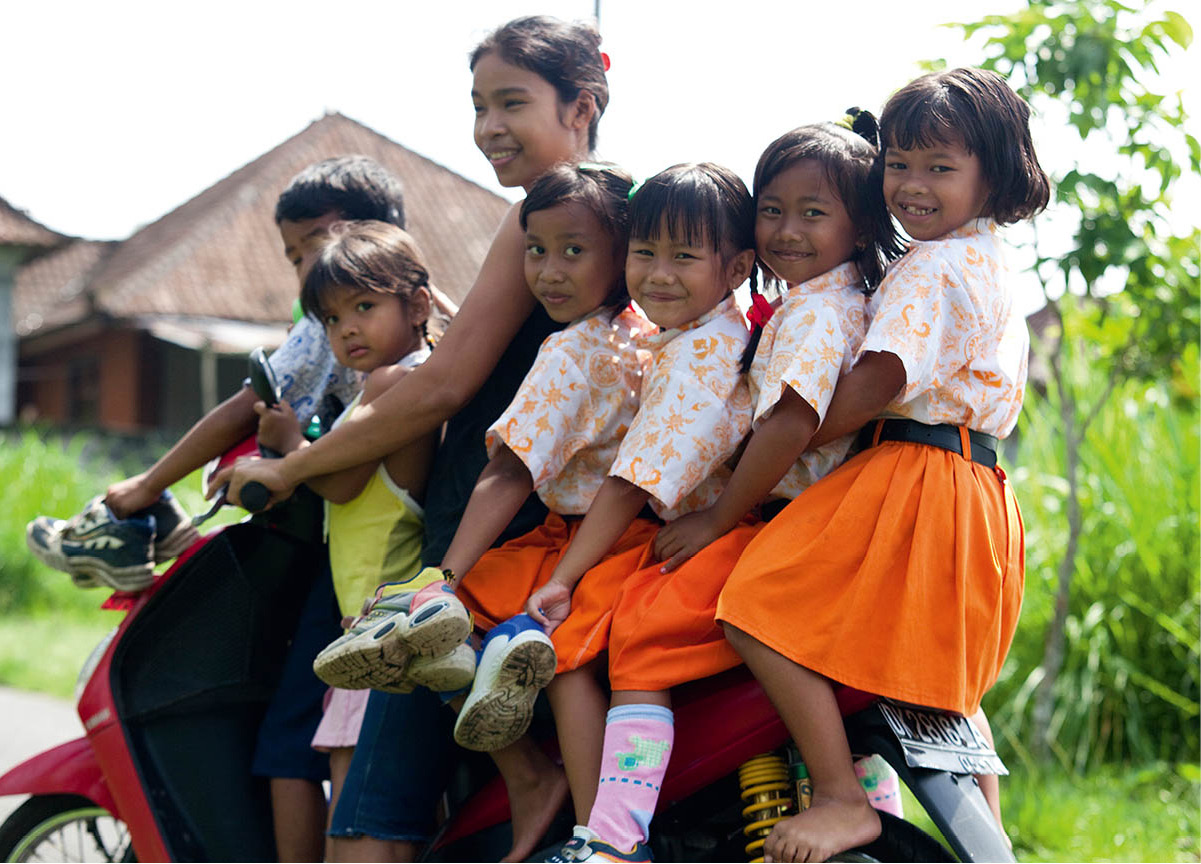
The school run, Ubud.
Corrie Wingate/Apa Publications
Education and health care
Although the number of people living in poverty, according to World Bank parameters, has dropped in the last decade from 60 percent to about 15 percent, many others (perhaps as many as 50 percent, around 120 million people) subsist close to this level. Thus, education and health care – both linked to poverty – are major issues to be dealt with.
Providing clean water and sanitation to all, especially those in remote locations, is a substantial challenge and is being addressed largely by international aid organisations. Decentralisation of government from total control in Jakarta to the regions has helped, and now local administrations are responsible for providing health care to their citizens and for controlling spending.
Foreign funding also assists in training more doctors, nurses and midwives; constructing public clinics that hopefully one day will be accessible to all; and providing nutrition education, maternal and newborn care, as well as immunisations for children.
The Indonesian constitution states that all citizens have a right to free education, but currently the majority of regions only sponsor primary school grades 1–6. Even in the absence of a tuition charge, the cost of books and uniforms is beyond reach for many families. Nevertheless, primary school enrolment throughout the country is about 96 percent, although it drops to around 50 percent for junior secondary schools. The reasons for this low take-up include lack of access to schools or, particularly in rural areas, the need for boys to work in the fields and girls to look after younger siblings while the parents work.
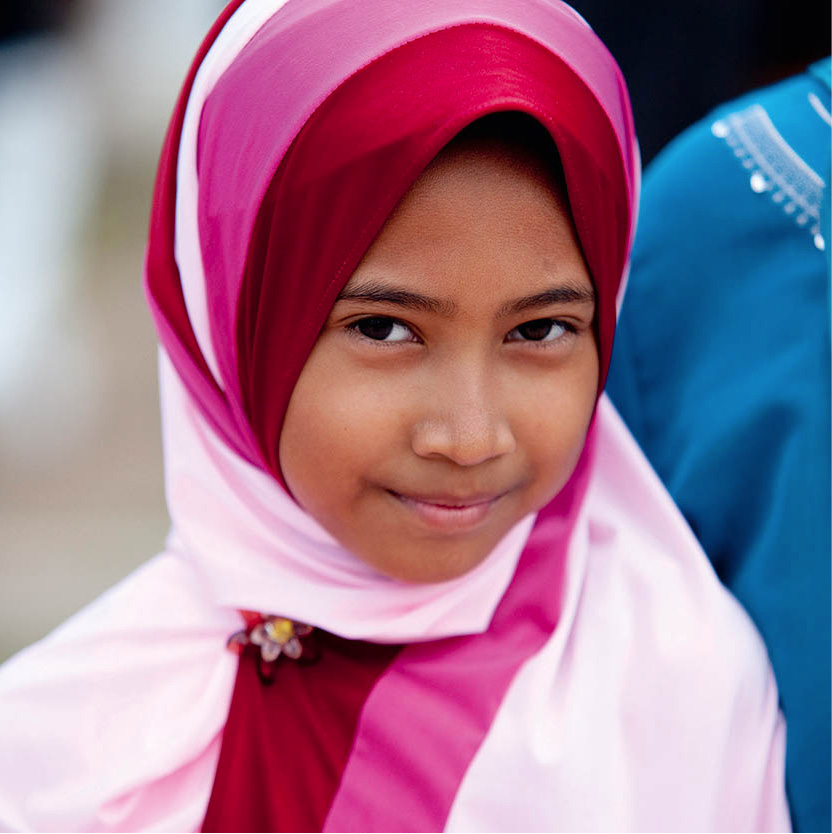
A Muslim girl on the way to the mosque.
Corrie Wingate/Apa Publications
The good news is that education spending has more than doubled since the fall of Suharto, with more spent on education than any other sector in recent years. But with over 5 million tertiary education students and 53 state and over 400 private universities nationwide, there is still much work to be done. Gaps in access to lower education are filled by private and religious schools – which play a significant role – and in the higher-education realm by vocational secondary schools, colleges and academies. As with health care, foreign funding is significant.
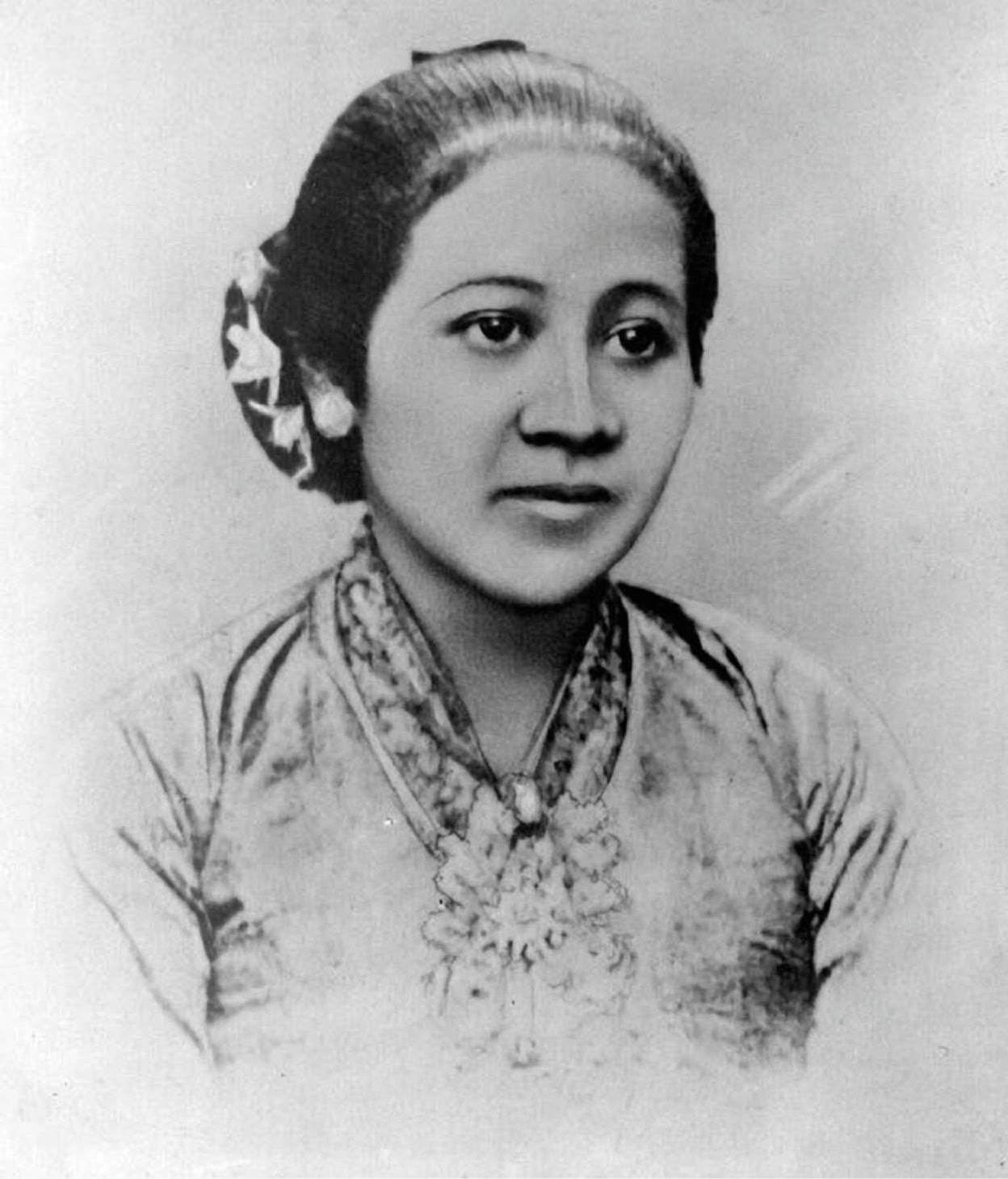
Pioneering feminist Raden Ayu Kartini.
Public domain
A show of patriotism
Regardless of where its citizens live, what their ethnic background is and whether they are wealthy or not, the Indonesian nationalism that was fanned in the run-up to independence is still very much alive today in certain respects.
When it comes to defending their country’s honour in sports arenas, against comments from outsiders that the people perceive to be slanderous or threatening, or when they feel one of their own has been mistreated, Indonesians tend quickly to adopt a patriotic stance. On the downside, many fall short in their ability to examine and analyse opposing points of view and are quick to accept, and repeat, popular opinion. This is the result of a weak education system that is in need of an overhaul. Although some are doing remarkable work, the vast majority of teachers, particularly at lower levels, have come up through the ranks of an archaic system that teaches by rote and punishment rather than encouraging young minds to think critically and form their own opinions. Some progress has been made in training new teachers and reforming their teaching methods, but not nearly enough.
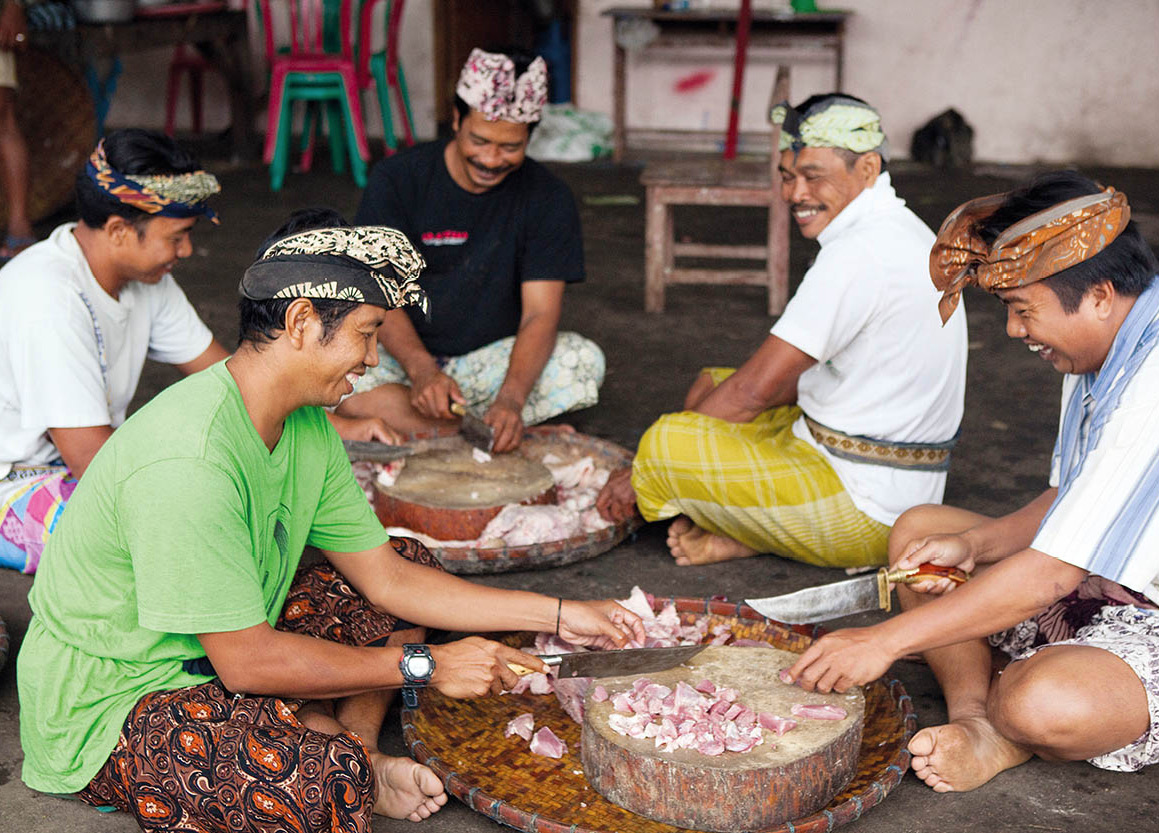
Festival preparations, Tabanan, Bali.
Corrie Wingate/Apa Publications
Raden Ayu Kartini
Indonesian women have, in part, Raden Ayu Kartini to thank for their equal role in society. She was born into a noble family in 1897; traditions of the time demanded that Javanese girls of her ilk be sequestered and protected to prepare them for arranged marriages, often to polygamist husbands who had full authority over them. Not permitted to go to school after the age of 12, Kartini was largely self-educated, learning from Dutch books and magazines through which she developed feminist attitudes. Her letters to Dutch friends railing against Javanese restrictions that robbed women of freedom were published in Holland in 1911, influencing prominent figures. She began teaching women in 1903, and after her untimely death at the age of 25, other schools for girls were established in her name. Today she is seen as a leader of women’s rights, and every year on her birthday, 12 April, her contributions are celebrated.
It might be surprising to know that in this country, with the world’s largest Muslim population, there are several top-ranking female government officials. In addition to a former president, women in politics include the ministers of health, trade, national development planning and women’s empowerment. The former finance minister, now managing director of the World Bank, Sri Mulyani Indrawati, is also female, demonstrating the moderate form of Islam practised by most Indonesians.
Indonesians have yet to appreciate how great their accomplishments have been in the last decade, and this is particularly true of the youth who did not grow up under the oppressive Suharto regime. Taking for granted the right to speak freely that was denied to their parents, when it is pointed out that Indonesia has the freest press in Asia, they are surprised. Quick to voice dissatisfaction that corruption has not yet been totally eradicated, they fail to note that the judicial system has been overhauled, independent judges have been hired, old judges are being weeded out and transparency is now the key word. They often forget, too, that Indonesia has made enormous strides at combating terrorism and that its unexpected success so far with democratisation is being used as a model for other developing countries. Many Indonesians also fail to realise how far human rights – including free elections – have come and that at last the regional and national governments are paying attention to the needs of the poor, education and health care, and how many millions of new jobs have been created.
Indonesians abroad
An increasing number of Indonesians are attracting attention abroad in a variety of sectors, making them ambassadors for their homeland. Long known internationally are its Olympics-winning badminton teams and female weightlifters. Indonesia’s Chris John has won the World Boxing Association’s featherweight title 14 times since 2003. Singer-songwriter Anggun Sasmi from Java has had a successful career in France for over a decade, and the US became acquainted with Indonesian pop star Agnes Monica in 2011 when she recorded an album with Michael Bolton, whom she met while co-hosting the 2010 American Music Awards. Indonesian fashion designers are beginning to make a splash overseas, too. An exciting young couture designer, Tex Saverio, created the confection worn by Lady Gaga on the cover of a 2011 US Harper’s Bazaar magazine.
Indonesia’s people have just begun their journey to full-fledged democracy, and many challenges lie ahead. But in view of their enormous diversity, the hurdles they have overcome are nothing short of amazing. Virtually unknown outside Asia until the last decade, the Indonesian cultures certainly bear watching as the 21st century progresses and are an example to other evolving nations.